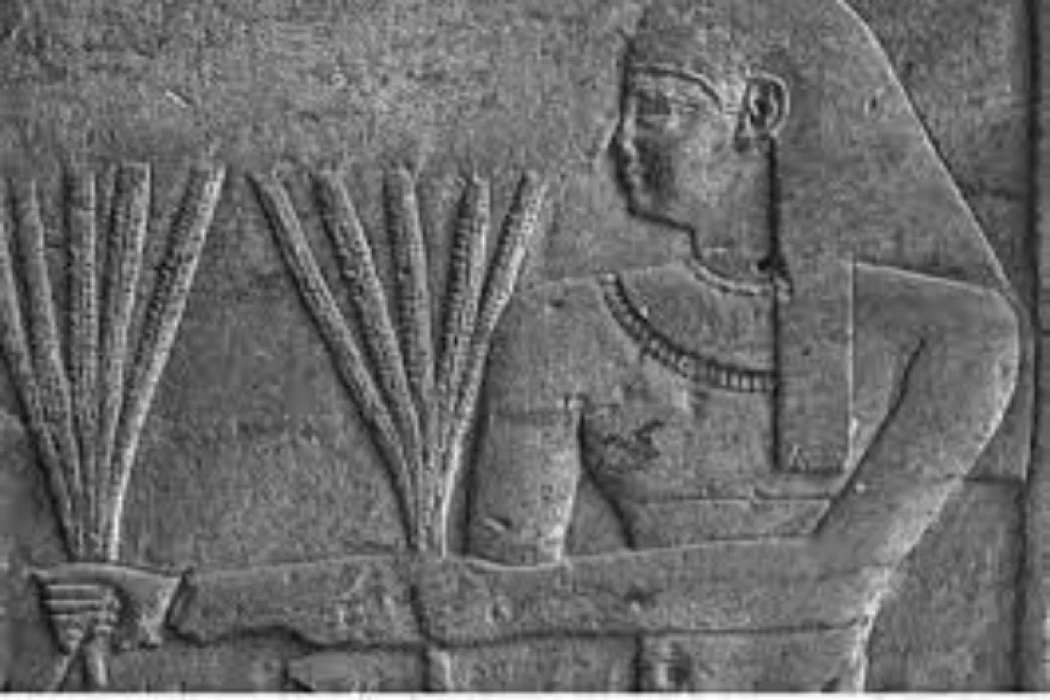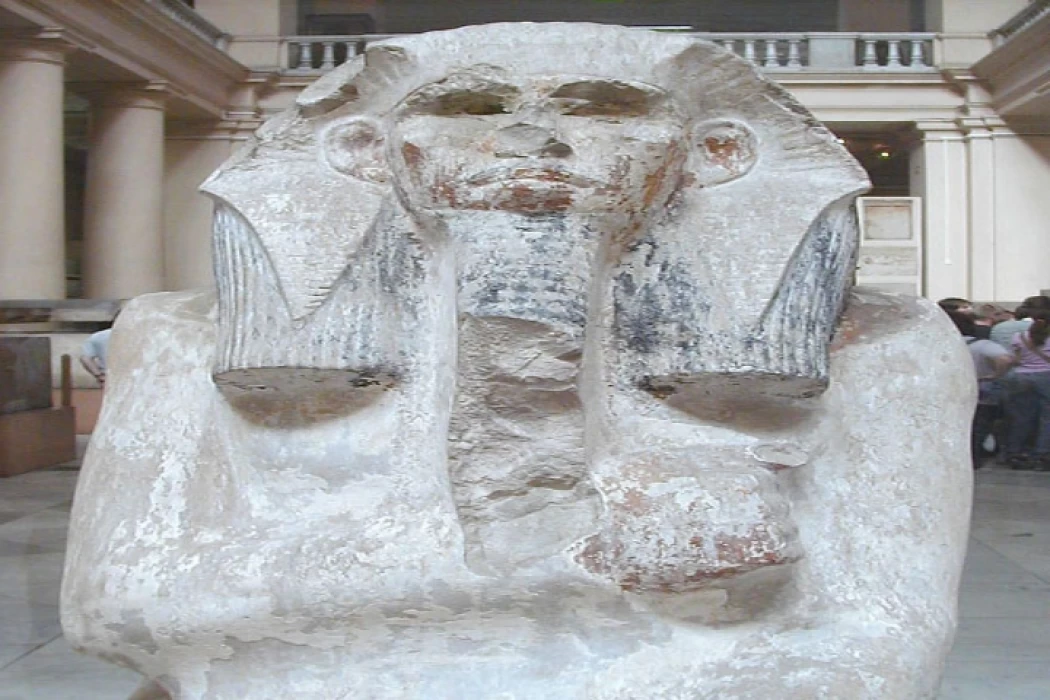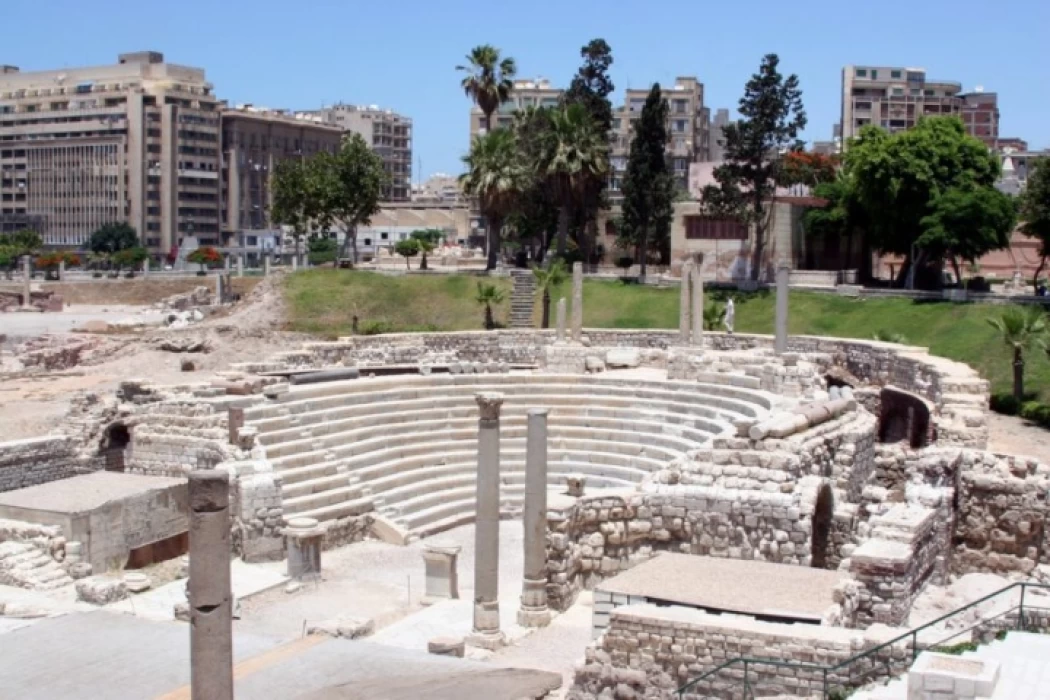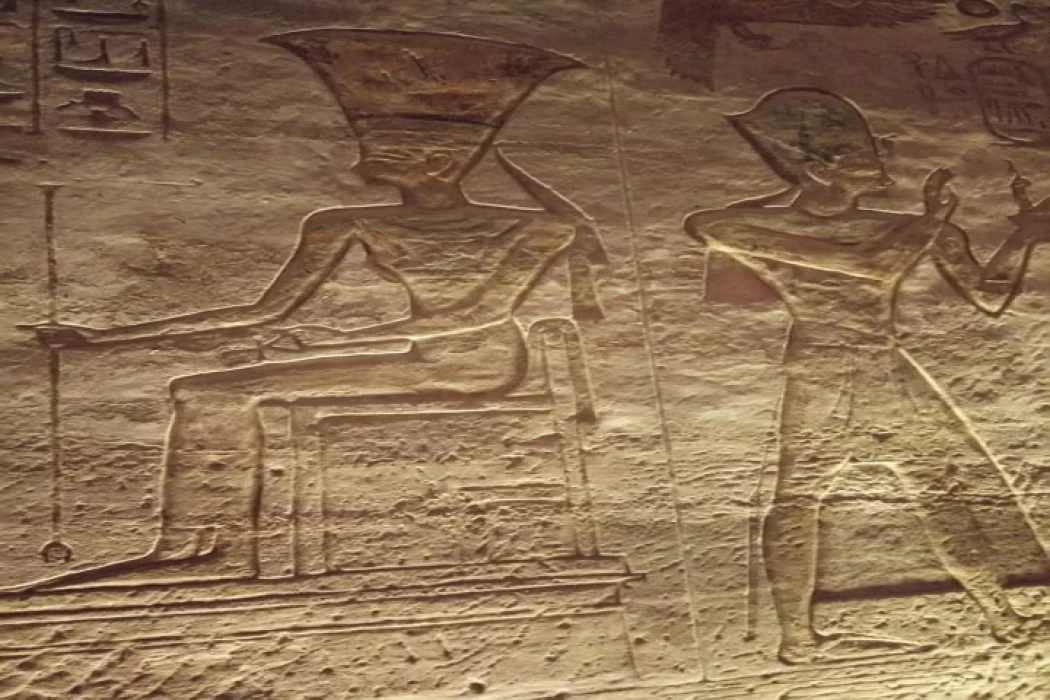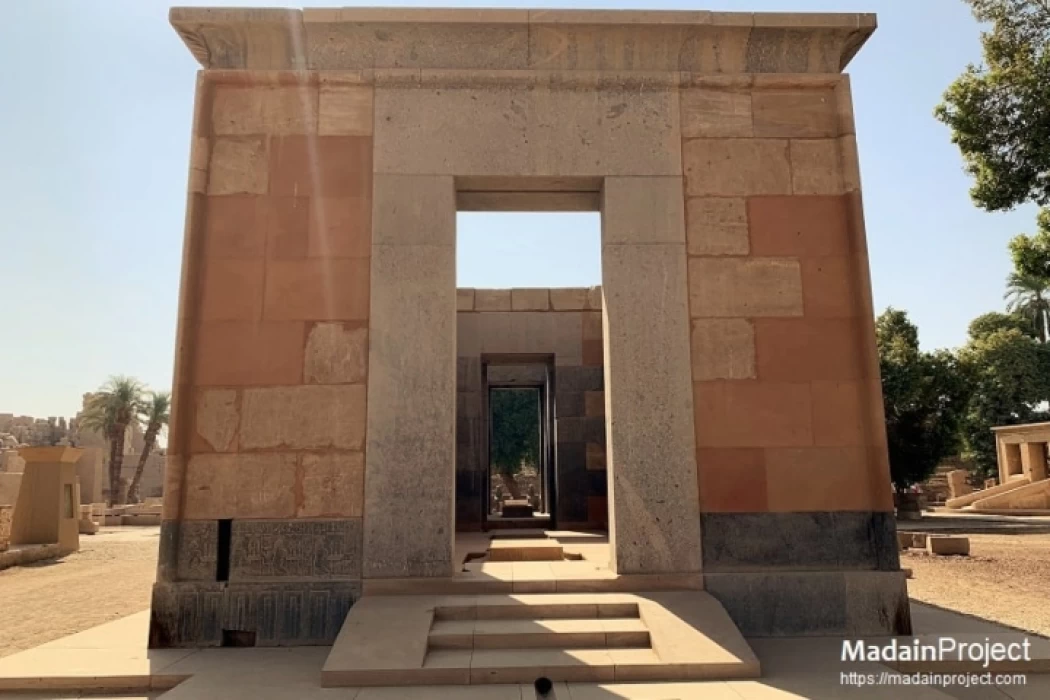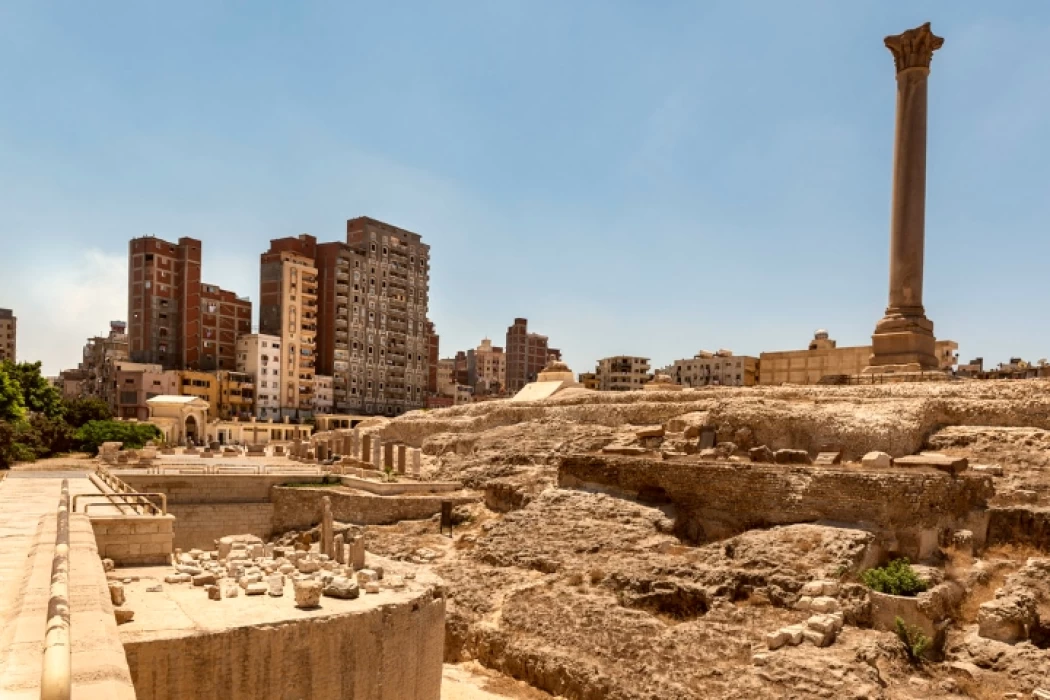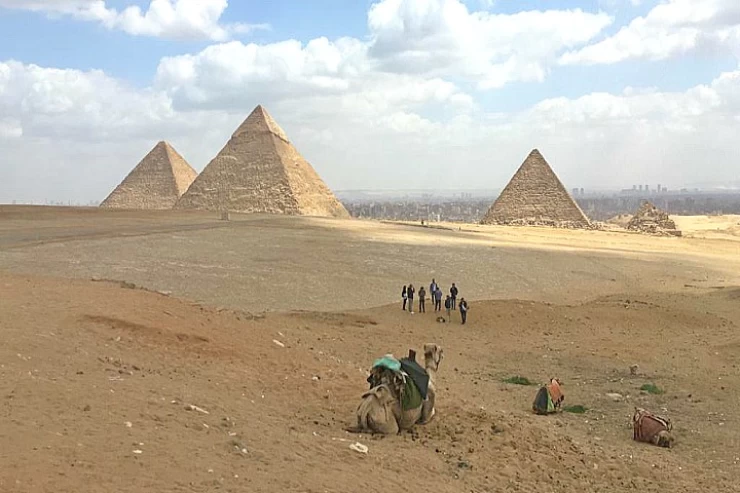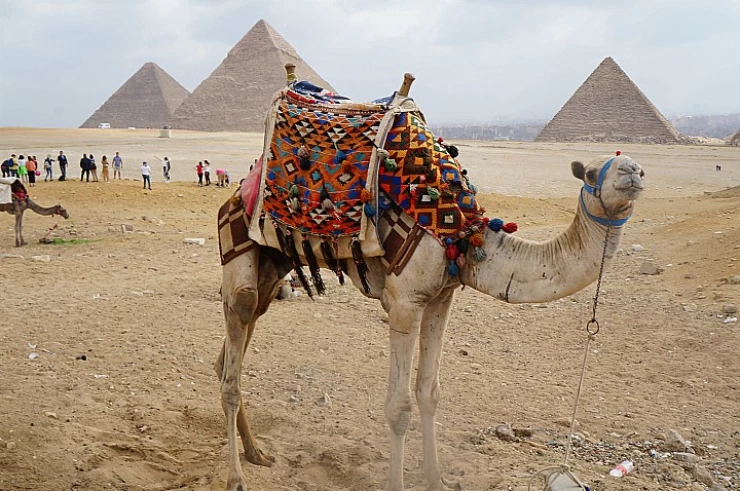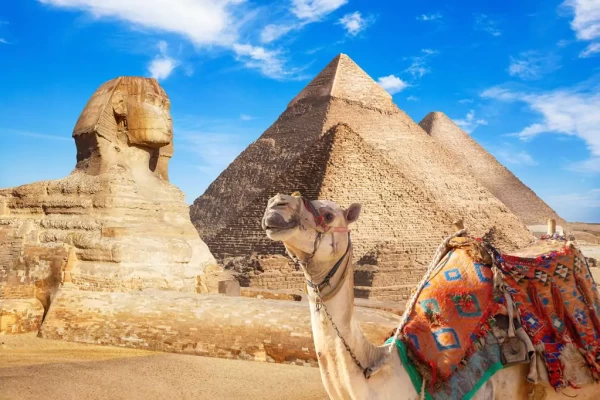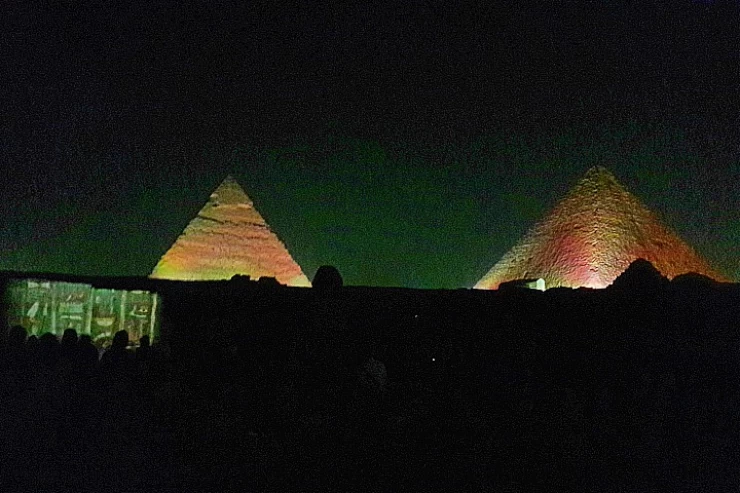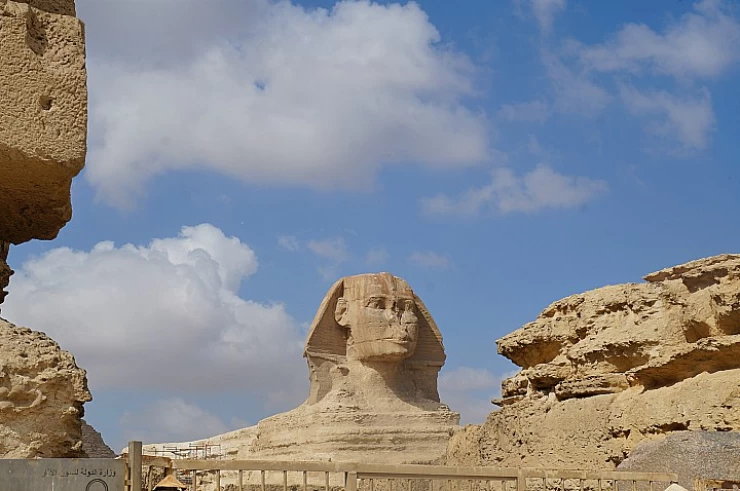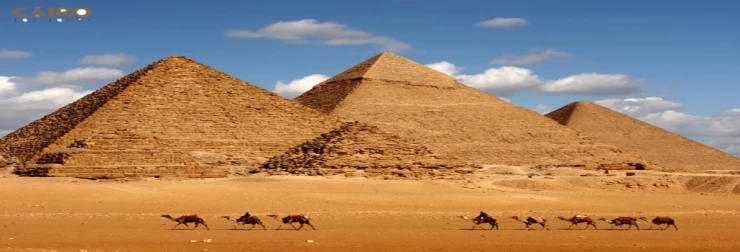
Pyramids of Egypt
According to sources, there are at least 118 identified "Egyptian" pyramids. The Kingdom of Kush, which is now Sudan, built approximately 80 pyramids. The majority of those in modern Egypt were built as tombs for the country's pharaohs and consorts during the Old and Middle Kingdom periods.
The earliest known Egyptian pyramids are found at Saqqara, northwest of Memphis, although at least one step-pyramid-like structure dating to the First Dynasty has been discovered at Saqqara: Mastaba 3808, which has been attributed to the reign of Pharaoh Anedjib, with inscriptions and other archaeological remains of the period, implying that others may have existed. The Pyramid of Djoser, erected between 2630 and 2610 BCE during the Third Dynasty, is the earliest of these. This pyramid and its surrounding complex are widely regarded as the world's oldest monumental constructions made of dressed masonry.
Pyramids are referred to in Egyptian as myr, represented by the symbol 𓉴 (O24 in the Gardner Sign List). Myr is preceded by three phonetic signs. The definition of myr is uncertain because it only refers to the created object itself. In comparison, certain related architectural phrases become compound words, such as the word for 'temple' (per-ka), which is a composite of the words for 'home' and ' soul'. By graphical analysis, myr has the same sign, O24, as Benben. The been is a mound of being that sprang from the abyss, also known as a nun in Egyptian creation myths.
The association between Myr and Benben is further strengthened by the capstone architectural element of pyramids and obelisks, known as Benbenet, the feminine version of Benben.
Tumuli with megalithic monuments appeared in the Saharan region of Niger as early as 4700 BCE, predating assumed earlier sites in the Eastern Sahara.According to Fekri Hassan (2002), megalithic monuments in the Saharan region of Niger and the Eastern Sahara may have functioned as forerunners to the mastabas and pyramids of ancient Egypt.During Predynastic Egypt, tumuli were located in numerous
Egyptians with adequate means were buried in bench-like constructions known as mastabas beginning in the Early Dynastic Period (c. 3150–2686 BCE). At Saqqara, Mastaba 3808, from the late 1st Dynasty, was revealed to feature a massive, separately built step-pyramid-like structure encased within the outer palace facade mastaba. Archaeological relics and inscriptions indicate that there may have been other comparable structures dating from this period.
Though more pyramids were tried in the third Dynasty after Djoser, it was the fourth Dynasty, which transitioned from the step pyramid to the genuine pyramid design, that produced the great pyramids of Meidum, Dahshur, and Giza. Shepseskaf, the last pharaoh of the 4th Dynasty, did not build a pyramid, and beginning in the 5th Dynasty, the immense scale and precision of building reduced drastically, resulting in smaller, less well-built, and frequently hastily made pyramids. By the end of the 6th Dynasty, pyramid building had completely halted, and it was not until the Middle Kingdom that massive pyramids were rebuilt, however instead of stone, mudbrick was the primary construction material.
Long after Egypt's own pyramid-building period had ended, a boom of pyramid-building happened in what is now Sudan, after most of Egypt fell under the control of the Kingdom of Kush, which was located at Napata. Napatan rule, also known as the 25th Dynasty, lasted from 750 BCE until 664 BCE.
The second Ayyubid Sultan of Egypt, Al-Aziz Uthman (1171-1198), attempted to destroy the Giza Pyramid complex. He gave up after only destroying the Pyramid of Menkaure because the undertaking became too daunting.
The shape of Egyptian pyramids is said to depict the primordial mound from which the Egyptians believed the earth originated. The design of a pyramid is considered to represent the sun's descending rays, and most pyramids were faced with polished, highly reflective white limestone to give them a spectacular appearance from a distance. Pyramids were frequently given names based on solar luminescence.
While it is generally accepted that pyramids were funeral monuments, there is ongoing debate about the specific theological beliefs that may have given rise to them. One theory is that they were created as a sort of "resurrection machine."
The Egyptians believed that the dark patch of the night sky around which the stars appear to rotate was a physical portal into the heavens. One of the tiny shafts that runs from the main burial chamber through the Great Pyramid points directly to the middle of the sky. This argues that the pyramid was intended to magically transport the deceased pharaoh's spirit directly into the home of the gods.
All Egyptian pyramids were built on the west bank of the Nile, which, being the location of the sinking sun, was associated with the realm of the dead in Egyptian mythology.
Many pyramids are in bad condition or have been buried in desert sand. If visible at all, they may appear to be little more than piles of rubble. As a result, archaeologists continue to discover and investigate newly unknown pyramid constructions.
The most recently unearthed pyramid was that of Neith, Teti's wife. Except for the modest Third Dynasty pyramid at Zawyet el-Maiyitin, all of Egypt's pyramids are located on the Nile's west bank, with the majority clustered in pyramid fields. The most important are mentioned geographically, north to south, below.
Abu Rawash is the location of Egypt's most northerly pyramid (apart from the ruins of Lepsius pyramid number one), the mostly wrecked Pyramid of Djedefre, Khufu's son and successor. Originally, it was thought that this pyramid had never been completed, but the current archaeological consensus is that it was not only completed but that it was about the same size as the Pyramid of Menkaure, putting it among Egypt's top half-dozen pyramids.
Its proximity to a major crossroads made it a convenient source of stone. Quarrying, which began in Roman times, has left nothing more than around fifteen courses of stone overlaid on the natural mound that comprised part of the pyramid's center. A little neighboring satellite pyramid is better preserved.
The Giza Plateau contains the Pyramid of Khufu (also known as the "Great Pyramid" and the "Pyramid of Cheops"), the slightly smaller Pyramid of Khafre (or Chephren), the relatively modest-sized Pyramid of Menkaure (or Mykerinus), as well as several smaller satellite edifices known as "Queen's pyramids" and the Great Sphinx of Giza. Only Khafre's pyramid has some of its original polished limestone casing near the peak. This pyramid appears larger than the adjacent Khufu pyramid by its more elevated location, and the steeper angle of inclination of its construction—it is, in fact, smaller in both height and volume.
This site, halfway between Giza and Abusir, is home to two incomplete Old Kingdom pyramids. The northern edifice is thought to have been owned by pharaoh Nebka, and the southern structure, known as the Layer Pyramid, could have been built by Third Dynasty pharaoh Khaba, a near successor of Sekhemkhet. If this attribution is genuine, Khaba's brief reign could explain why the step pyramid appears unfinished. It is currently roughly 17 m (56 ft) tall; if completed, it would most likely have been over 40 m (130 ft).
This site contains fourteen pyramids, which served as the principal royal necropolis throughout the Fifth Dynasty. The Abusir pyramids are of lower quality than those built during the Fourth Dynasty, possibly indicating a decline in royal power or a less robust economy. They are smaller than their predecessors and made of low-grade local limestone.
Saqqara
South of Saqqara's main pyramid field is a second group of smaller pyramids, including those of Pepi I, Djedkare Isesi, Merenre, Pepi II, and Ibi. The majority of these are in poor preservation.
The Fourth Dynasty pharaoh Shepseskaf either lacked interest in or the ability to build pyramids like his predecessors. His tomb, which is also located in southern Saqqara, was designed as an extremely large mastaba and offering temple complex.
Dahshur
This is likely Egypt's most important pyramid field outside of Giza and Saqqara, yet until 1996, the site was inaccessible due to its position within a military base and was relatively unknown outside of archeological circles. The southern Pyramid of Sneferu, also known as the Bent Pyramid, is thought to be the first Egyptian pyramid intended by its builders to be a "true" smooth-sided pyramid from the start; the earlier pyramid at Meidum had smooth sides in its finished state, but it was designed and built as a step pyramid, with its steps filled in and concealed beneath a smooth outer casing of dressed stone. As such, it is the best current example of how the ancient Egyptians envisioned their pyramids to look. The Red Pyramid, located several miles north of the Bent Pyramid, is the last—and most successful—of the three pyramids built under Sneferu's reign; it is the world's first completed smooth-sided pyramid. The construction is also Egypt's third-largest pyramid, behind the Khufu and Khafra pyramids at Giza.
Also at Dahshur is one of two pyramids built by Amenemhat III, known as the Black Pyramid, as well as several small, mostly ruined subsidiary pyramids.
Mazghuna
Located south of Dahshur, several mudbrick pyramids were constructed in this area during the late Middle Kingdom, possibly for Amenemhat IV and Sobekneferu.
Lisht
Lisht is known to have had two huge pyramids built by Amenemhat I and his son Senusret I. The latter is encircled by the remains of ten smaller subsidiary pyramids. One of these secondary pyramids is believed to be that of Amenemhat's cousin, Khaba II. The site which is in the vicinity of the oasis of the Faiyum, midway between Dahshur and Meidum, and about 100 kilometers south of Cairo.
Medium
The pyramid at Meidum is one of three built during Sneferu's reign, and some believe it was started by Huni, the pharaoh's father and predecessor. However, this attribution is questionable because no record of Huni's name has been discovered at the location. It was built as a step pyramid and later turned into the first "true" smooth-sided pyramid by filling in the steps and adding an outer casing. Throughout ancient and medieval periods, the pyramid saw multiple catastrophic collapses. According to medieval Arab literature, it had seven steps, but only the three uppermost ones remain now, giving the structure an unusual, tower-like look. The hill where the pyramid is located is not a natural geographic feature.
El Lahun
Its builders decreased the amount of work required to build it by employing a 12-meter-high natural limestone slope as the foundation and core.
El-Kurru
Piye, the monarch of Kush and the first ruler of the Twenty-fifth Dynasty, constructed a pyramid at El-Kurru. He was the first Egyptian king to be interred in a pyramid in centuries.
Nuri
Taharqa, a Kushite ruler from the Twenty-fifth Dynasty, built his pyramid in Nuri. It was the largest in the region (North Sudan).
Latest Articles
Admin
Neper God Of Grain
Neper was the deity of grains, particularly cereals that were important in Ancient Egypt, such as wheat and barley. It was stated that he foretold when the crops would grow, be harvested, and disappear.
Admin
Djoser
Djoser was an ancient Egyptian pharaoh of the 3rd Dynasty during the Old Kingdom and was the founder of that epoch. He is also known by his Hellenized names Tosorthros (from Manetho) and Sesorthos (from Eusebius). He was the son of King Khasekhemwy and Queen Nimaathap, but whether he was also the direct successor to their throne is unclear. Most Ramesside king lists identify a king named Nebka as preceding him, but there are difficulties in connecting that name with contemporary Horus names, so some Egyptologists question the received throne sequence. Djoser is known for his step pyramid, which is the earliest colossal stone building in ancient Egypt
Admin
Kom Al Dikka Alexandria
Kom El Deka, also known as Kom el-Dikka, is a neighborhood and archaeological site in Alexandria, Egypt. Early Kom El-Dikka was a well-off residential area, and later it was a major civic center in Alexandria, with a bath complex (thermae), auditoria (lecture halls), and a theatre.
Admin
The God Anuket
Anuket, in Egyptian religion, the patron deity of the Nile River. Anuket is normally depicted as a beautiful woman wearing a crown of reeds and ostrich feathers and accompanied by a gazelle.
Admin
The Red Chapel of Hatshepsut
The Red Chapel of Hatshepsut or the Chapelle rouge was a religious shrine in Ancient Egypt. The chapel was originally constructed as a barque shrine during the reign of Hatshepsut. She was the fifth pharaoh of the Eighteenth Dynasty from approximately 1479 to 1458 BC.
Admin
The Serapeum of Alexandria
The Serapeum of Alexandria in the Ptolemaic Kingdom was an ancient Greek temple built by Ptolemy III Euergetes (reigned 246–222 BC) and dedicated to Serapis, who was made the protector of Alexandria, Egypt. There are also signs of Harpocrates. It has been referred to as the daughter of the Library of Alexandria.
